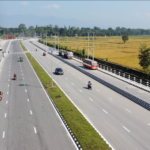When 15,000 fans erupted with joy at crucial moments of the ICC World Cup qualifier at the Grand Prairie Stadium in Dallas, US, the world took notice. The world was surprised to see the fan following for cricket amongst Nepalis and the way they had advanced in the game in the past decades. Back home in Kathmandu and various other cities, towns, and villages of Nepal, people watched the Nepal-Netherlands game late into night. Even though Nepal lost in a nail-biting finish with the formidable team of South Africa, they won the hearts of millions around the world. Nepal has arrived in the global cricketing scene! Here are the three major takeaways to look ahead into the future.
First, sports have been a great way to demonstrate soft power. Growing up, when we watched Denmark as a football giant, we never knew it was a country of just six million people, which is a fifth of Nepal’s population. Croatia, a country of four million people, got into the global map when they reached the finals of the 2018 World Cup football. This success positively impacted tourism with more people wanting to visit the country. Nepal already has a good global brand due to its majestic mountains and hospital people people; better positioning in global sports will only accelerate the process.
Second, this was the first time people saw the strength of Nepali diaspora on their television screens. While social media reels and videos of Nepalis taking part in parade and organizing events have been doing the rounds, this was the first time a large number of Nepalis outside Nepal were seen in a single place cheering for the Nepali team. My colleague Rojesh was eagerly waiting to see men in blue donning the stands – a sight he had been imagining for months. It does not matter what passport or citizenship you hold, it is important to be associated with the Nepali identity. In line with this belief, the Global Nepali Network (GNN) program at the Nepal Economic Forum has been working on the shift of the Nepali identity away from citizenship to language and the larger identity of a Global Nepali. With over half a million Nepalis in the US, it is perhaps the country with the highest number of Nepali speaking people after India in terms of people of Nepali origin settled in the country. This is a big market with latent demand to tap for Nepali origin products and services.
Third, Nepali cricket has reached this stage despite all the challenges and politics within the associations, interference of various quarters, and lack of good infrastructure. There is commercial opportunity on this sport and many other sports, given the fact that Nepal is a country with fifty percent of population under twenty-five years of age who are looking for positive engagements with teams they support. It is also time to think of becoming a regional destination for international quality matches. Nepal could host India-Pakistan games as a neutral venue while also combining sports with tourism. With easier connectivity through both land and air, there can be more people joining in person to enjoy matches and engage in tourism. However, the scale of developments have to be larger in scale and match international standards. For example, in Kigali, Rwanda, the Amohoro stadium was renovated to accommodate 45,000 people and built taking into consideration global certification. The cost of this project was USD 170 million. In contrast, Nepal’s budget had mere allocation of USD 10 million for multiple projects across the country. It is time that the private sector really looks at this as a serious business to pursue. An average thousand rupee ticket with a forty five thousand capacity crowd means NPR 45 million (USD 340,000) a match! Match revenues, including sponsorship of USD 1 million a match, looks an achievable target. Just to put into perspective, the broadcasting rights of an Indian Premier League (IPL) match alone is USD 16.8 million!
Like the Nepali economy that has progressed despite all the challenges, Nepali cricket and other sports have also moved ahead despite the teething problems of infrastructure, political wranglings, and interference. What we need is a bunch of people with entrepreneurial instincts to think of the next steps to unleash the potential of Nepali sports, including cricket. Local leagues have started and there is corporate interest. What we need now is long-term thinking and Nepalis around the world rallying behind. The world cup participation and the support we saw on our television screens have made us think what next. It will perhaps be the turning point for Nepali cricket, sports, and beyond!
Sujeev is the founder CEO of beed. He leverages over 25 years of experience in diverse fields and geographies to advise, lead and inspire. With comprehensive networks in Nepal’s public, private, civil and diplomatic sectors, Sujeev is a trusted business and policy advisor and respected strategic thinker. From economies of developing countries to economies of human beings, he moves across different worlds, with his passion for the Himalayas being the axis.





